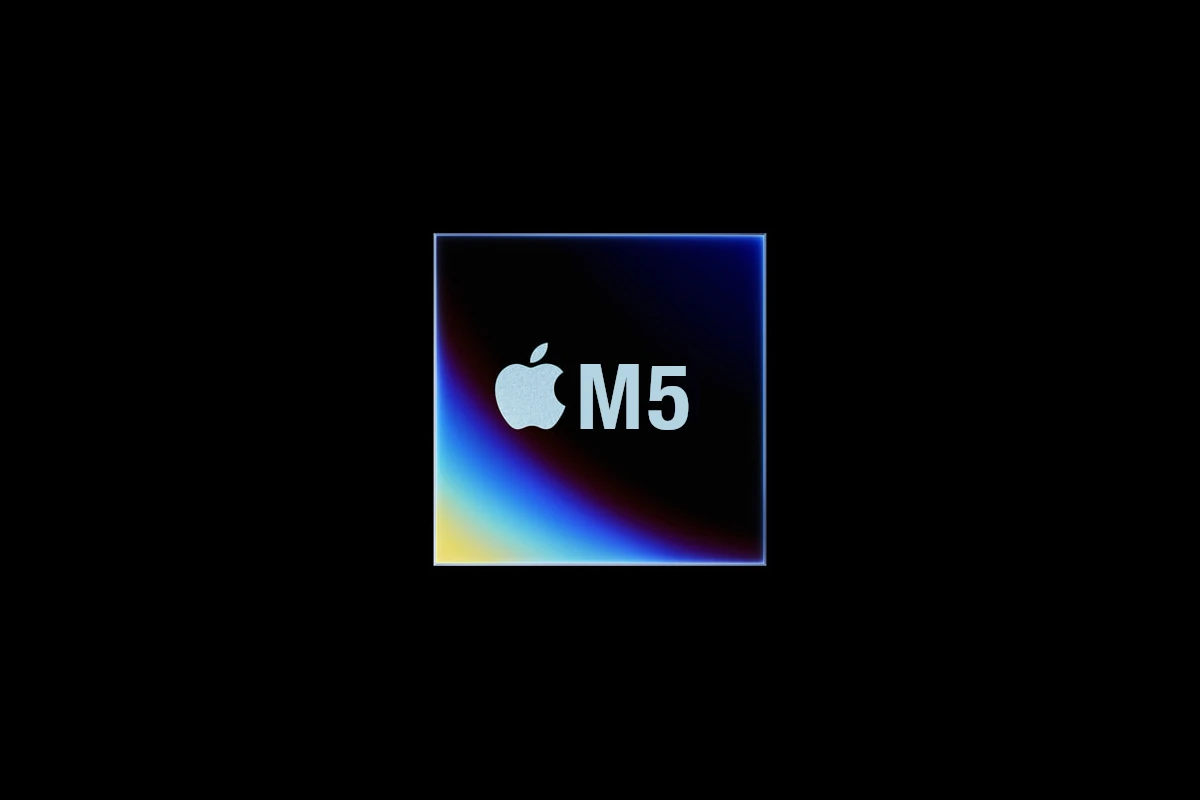Apple’s next generation of processors is shaping up to bring major changes to Mac computers. The upcoming M5 chip, expected to debut in fall 2025, will reportedly use advanced System-on-Integrated-Circuits (SoIC) packaging technology developed by TSMC. This technological advancement aims to boost performance for both consumer Macs and AI cloud applications, showing Apple’s continued commitment to custom silicon.
The new M5 chip will reportedly remedy an unpopular decision made with the M4 series, giving Mac users something to look forward to in the next upgrade cycle. While Apple hasn’t officially announced specifics, industry reports suggest high-end M5 chips may enter mass production in the second half of 2025, though this timeline could potentially slip into 2026.
Some Mac models featuring the M5 chip may also come with other advancements like OLED displays and possibly even Apple’s C1 modem for improved connectivity. These upgrades represent Apple’s ongoing strategy of vertical integration, controlling both hardware and software to deliver optimized performance across its product lineup.
Apple M5 Chip: Everything We Know
Apple’s silicon roadmap is about to take another big leap forward. Following the success of the M4 chip earlier this year, Apple is preparing to launch its M5 chip in fall 2025, with first appearances expected in the MacBook Pro lineup and later expanding to iPads, desktops, and even the Vision Pro headset (source: MacRumors).
Here’s everything we know so far about Apple’s next-generation processor — and what it means for performance, efficiency, and AI.
1. Built on TSMC’s N3P Process
The M5 will reportedly be manufactured using TSMC’s N3P process, an enhanced version of the 3nm technology used in the M4.
- What this means:
- Higher transistor density → more performance per watt
- Better energy efficiency → longer battery life in MacBooks and iPads
- Lower thermal output → thinner device designs possible
Apple has consistently used process improvements to push the balance of performance and efficiency, and the M5 looks to continue that trend.
2. Performance Gains: Beyond the M4
While benchmarks won’t be available until launch, early reports suggest the M5 will deliver double-digit performance improvements over the M4, especially in multi-core workloads (source: ComputerCity).
Expected improvements include:
- Faster CPU cores optimized for both single-threaded and multi-threaded tasks
- Next-gen GPU architecture with better ray tracing and rendering performance for pro workflows and gaming
- Expanded Neural Engine for AI and machine learning tasks, rumored to reach up to 48 cores
This aligns with Apple’s push to integrate Apple Intelligence across its ecosystem, where on-device AI performance is critical.
3. AI at the Core
One of the biggest shifts with the M5 will be its role as the backbone of Apple’s AI strategy.
- On-device AI: Apple is expected to offload more tasks from the cloud to the device, including generative AI features in macOS and iPadOS.
- Neural Engine boost: The M5’s Neural Engine could handle complex AI tasks like real-time transcription, image generation, and advanced personal assistant functions without relying on external servers.
- Battery-friendly AI: Thanks to the N3P process, these tasks should be faster and more power-efficient.
This positions Apple to compete directly with Qualcomm’s Snapdragon X Elite and Intel’s upcoming Lunar Lake chips, both of which emphasize AI acceleration.
4. Product Roadmap: Where to Expect the M5
According to multiple reports, the M5 chip will debut in late 2025 across several flagship devices (sources: MacRumors, 9to5Mac):
- MacBook Pro (14″ and 16″) – Fall 2025
- iPad Pro – Late 2025 / Early 2026
- Mac mini – Early 2026
- iMac – Early 2026
- Vision Pro 2 – Possible integration in 2026
As with previous generations, Apple is also expected to release M5 Pro, M5 Max, and M5 Ultra variants for high-end desktops and professional workflows (source: GadgetMates).
5. Why It Matters
The M5 isn’t just another incremental update — it’s a strategic milestone for Apple:
- Keeps Apple ahead of Intel/AMD in performance-per-watt efficiency
- Strengthens Apple Intelligence by enabling faster, private, on-device AI
- Extends battery life for MacBooks and iPads, a key selling point for mobile professionals
- Future-proofs Apple’s ecosystem for the next wave of AI-driven apps and workflows
6. Expected Timeline
- September 9, 2025 – Apple’s “Awe-dropping” event (focus on iPhone 17, but possible M5 teasers)
- October/November 2025 – MacBook Pro with M5 launches
- 2026 – Wider rollout to iPad Pro, Mac mini, iMac, and Vision Pro 2
Final Take
The Apple M5 chip represents more than just faster performance — it’s Apple’s clearest step yet toward an AI-first computing future. With efficiency gains from TSMC’s N3P process, a stronger Neural Engine, and expanded GPU capabilities, the M5 could set a new standard for laptops, tablets, and desktops alike.
If Apple delivers as expected this fall, the M5 may not only redefine Mac performance but also cement Apple’s position as the leader in AI-optimized silicon.
Key Takeaways
- The Apple M5 chip is expected to launch in fall 2025 with advanced packaging technology for better performance.
- Apple is designing the M5 with dual-use capabilities to power both consumer Macs and AI cloud applications.
- The new chip will address shortcomings from the M4 generation while potentially arriving alongside OLED display technology in high-end Macs.
Overview of the Apple M5 Chip
The Apple M5 chip is slated to be Apple’s next-generation silicon expected to arrive later in 2025. This upcoming processor will power future Macs and potentially serve AI applications, representing a significant advancement in Apple’s custom chip design.
Based on TSMC’s N3P process, the M5 remains a 3nm chip but with improved architecture. The chip will reportedly utilize advanced System-on-Integrated-Chips (SoIC) packaging technology developed by TSMC, enabling better performance in both consumer Macs and AI cloud servers.
Performance improvements are expected to be substantial compared to the M4 series. The M5 chip will likely deliver enhanced computational capabilities and graphics performance, continuing Apple’s trend of generational improvements.
Power efficiency remains a key focus for Apple’s chip development. The M5 will probably maintain or improve upon the excellent battery life seen in current Apple silicon Macs while delivering more processing power.
Heat control is another critical aspect, as more powerful chips typically generate more heat. Apple’s design will need to balance performance gains with thermal management.
The M5 chip may play a significant role in supporting Apple Intelligence features. These AI capabilities require substantial processing power, particularly for on-device machine learning tasks.
The MacBook Pro lineup is rumored to be among the first devices to receive the M5 chip. This aligns with Apple’s pattern of introducing new silicon in professional devices before wider deployment.
Technological Innovations in M5 Chip
The M5 chip represents a significant leap forward in Apple’s silicon technology. The upcoming processor incorporates cutting-edge manufacturing processes, advanced packaging techniques, and specialized AI hardware to deliver substantial performance improvements.
3nm Process Technology
Apple’s M5 chip will leverage TSMC’s advanced 3-nanometer process technology (N3P), which has reportedly entered mass production. This manufacturing breakthrough allows Apple to pack more transistors into the same physical space, leading to significant gains in both performance and energy efficiency.
The N3P process represents TSMC’s enhanced version of their 3nm node, offering better yields and performance characteristics than earlier iterations. Industry sources indicate that TSMC has begun high-volume production specifically for Apple’s M5 processors using this advanced fabrication process.
The smaller transistor size enables Apple to either create more powerful chips within the same footprint or maintain similar performance while reducing chip size and power consumption. This advancement will likely result in MacBooks with longer battery life and improved thermal performance.
SOIC-MH Packaging
The M5 chip will reportedly utilize TSMC’s System on Integrated Chips Multi-Height (SOIC-MH) packaging technology. This advanced packaging method allows Apple to stack multiple silicon dies vertically rather than placing them side by side.
SOIC-MH packaging enables tighter integration between different components, such as CPU cores, GPU cores, neural engines, and memory. The technology creates shorter connection paths between these elements, reducing latency and power consumption while improving overall system performance.
This packaging innovation helps Apple create a more compact chip design while maintaining or improving performance metrics. It also facilitates better heat distribution across the chip, potentially reducing thermal bottlenecks that can limit sustained performance in intensive workloads.
Artificial Intelligence (AI) Integration
The M5 chip design places significant emphasis on AI capabilities, with reports suggesting a dual-use architecture that will power both consumer Macs and AI cloud servers. The processor will likely feature an enhanced neural engine with more cores and improved machine learning algorithms.
This AI focus aligns with Apple’s increasing integration of machine learning capabilities across its software ecosystem. The enhanced neural processing units will accelerate tasks like image recognition, natural language processing, and other AI workloads that are becoming central to modern computing experiences.
Industry sources suggest that the M5’s AI architecture will deliver substantial performance improvements for developers working with machine learning frameworks. The chip may also include specialized hardware for specific AI functions, similar to how current Apple chips dedicate silicon to video encoding/decoding tasks.
M5 Chip Performance
Apple’s upcoming M5 chip promises significant improvements in both computational power and graphics capabilities. These advancements will benefit everyday Mac users and potentially extend to specialized AI applications.
CPU and GPU Designs
The M5 chip is expected to deliver substantial performance gains compared to the current M4 generation. Built on TSMC’s advanced N3P process node, this 3-nanometer technology allows for greater power efficiency while boosting processing capabilities.
The CPU architecture will likely feature enhanced cores with higher clock speeds and improved instruction handling. Reports suggest the M5 could include more performance cores than previous generations, creating a better balance between power and efficiency.
Graphics processing is also set for a major upgrade. The integrated GPU in the M5 chip will offer stronger capabilities for creative professionals working with video editing, 3D rendering, and graphic design. These improvements should translate to smoother performance in resource-intensive applications.
Battery efficiency remains a priority despite the performance gains. Apple has consistently managed to increase power while maintaining or extending battery life with each generation.
AI Servers Application
The M5 chip represents a significant shift in Apple’s strategy, as it appears designed not just for consumer Macs but also AI server applications. This dual-use approach marks new territory for Apple’s silicon team.
TSMC’s advanced System-on-Integrated-Chips (SoIC) packaging technology plays a crucial role in this development. This packaging method allows Apple to integrate more specialized components within the same chip area, potentially dedicating more resources to AI processing.
The enhanced neural engine will likely process machine learning tasks faster than ever before. This could benefit everything from photo processing to natural language features across macOS applications.
Cloud-based AI services may leverage specialized M5 server configurations with optimized cooling and power delivery systems. These enterprise solutions would help Apple compete in the growing AI infrastructure market against established players.
Product Line Integration
Apple is positioning the M5 chip as a cornerstone for its ecosystem of products, with plans to deploy this advanced silicon across multiple device categories. The new chip will help Apple maintain its competitive edge in performance and efficiency.
Incorporation in MacBook Pro
The MacBook Pro lineup is expected to be among the first to receive the M5 chip upgrade, likely in late 2025. Apple typically refreshes its professional laptop line with new silicon approximately every 18 months, making this timeline consistent with previous release patterns.
The M5-powered MacBook Pro models will likely leverage the advanced SoIC (System on Integrated Chips) packaging technology developed by TSMC. This approach allows for better performance and efficiency compared to traditional chip designs.
Professionals and creative users can expect significant performance improvements for tasks like video editing, 3D rendering, and software development. The new chip architecture may also bring enhanced battery life – a consistent selling point for Apple Silicon Macs.
Deployment in iPad Pro
The iPad Pro is set to receive the M5 chip sometime between late 2025 and mid-2026, according to industry reports. This aligns with Apple’s strategy of bringing Mac-level computing power to its premium tablet lineup.
The M5 iPad Pro will likely push the boundaries of what tablet computing can achieve. Users can expect faster performance for professional applications like graphic design software, video production tools, and augmented reality applications.
Battery efficiency should see improvements despite the additional processing power. This balance of performance and power consumption has been a hallmark of Apple’s chip design philosophy.
The integration will further blur the line between iPad and MacBook capabilities, potentially bringing new professional workflows to the tablet form factor.
Expansion to Upcoming Devices
The Vision Pro headset is another candidate for M5 integration. Apple’s mixed reality device would benefit significantly from the improved processing power and energy efficiency of the M5, enabling more complex AR/VR experiences.
Apple may also introduce the M5 to other devices in its ecosystem, possibly including high-end Mac mini and iMac models. This would create a consistent computing experience across Apple’s product lines.
The chip’s reported dual-use design suggests Apple has plans for both consumer devices and AI cloud server applications. This dual focus indicates Apple’s growing interest in AI capabilities across its product ecosystem.
New devices specifically designed to showcase the M5’s capabilities might also emerge, continuing Apple’s tradition of hardware innovation that leverages its custom silicon advantage.
Comparison to Previous Generations
Apple’s M5 chip series represents a significant leap forward in performance and efficiency compared to earlier generations. The improvements span across processing power, graphics capabilities, and specialized features for AI workloads.
M5 Series Versus M4 Series
The M5 chip brings notable upgrades over the M4 series through TSMC’s advanced N3P 3nm process technology. This refinement allows for better computational and graphical performance while maintaining or improving power efficiency.
The base M5 chip is expected to deliver 15-20% faster CPU performance than the M4, with even greater gains in GPU capabilities. This translates to smoother multitasking and faster rendering times for creative professionals.
For MacBook Pro users, the transition from M4 to M5 models will likely maintain similar physical designs but offer substantial internal improvements. The M5 Pro variant specifically targets professional workloads with enhanced multi-core performance and dedicated AI processing units.
Battery life improvements are also anticipated, as the more efficient architecture allows for greater performance per watt than the M4 MacBook Pro lineup.
Enhancements from M5 Max to M5 Ultra
The M5 Ultra represents the pinnacle of Apple’s chip design, essentially combining two M5 Max chips into a single powerhouse package. According to industry reports, the M5 Max will arrive in 2025, with the M5 Ultra following in 2026.
Key differences between these top-tier chips include:
- Core count: The M5 Ultra is expected to double the CPU and GPU cores of the M5 Max
- Memory bandwidth: Significantly higher in the Ultra variant
- AI processing: Enhanced neural engine capabilities for machine learning tasks
The M5 Ultra will likely target desktop systems like the Mac Studio and Mac Pro, while the M5 Max will power high-end MacBook Pro models for mobile professionals requiring maximum performance.
Both chips benefit from Apple’s SoIC (System on Integrated Chips) packaging technology, developed with TSMC, which enables tighter integration of components for better performance and efficiency than the M4 Ultra and M4 Pro versions.
Market and Industry Impact
Apple’s M5 chip is poised to reshape the competitive landscape in the semiconductor industry. The upcoming high-end chip’s advanced features and production timeline will have significant implications for Apple’s market position and relationships with suppliers.
Competitive Analysis
AMD and other chipmakers face mounting pressure as Apple continues its silicon innovation trajectory with the M5. The M5’s reported performance improvements of 5% and power efficiency gains of 5-10% may seem modest but represent significant advancements in the tightly contested chip market.
Apple’s vertical integration strategy—controlling both hardware and software—gives it unique advantages over competitors who must design chips for various systems. This approach enables Apple to optimize the M5 specifically for macOS and iPadOS, potentially widening the performance gap with AMD and other rivals.
The M5’s dual-use design for consumer products and AI servers signals Apple’s intent to compete in multiple markets simultaneously. This strategy could pressure Amazon and other cloud providers relying on third-party chip designs.
Mass Production Considerations
Mass production of the high-end M5 chips is expected to begin in the second half of 2025, though some reports suggest it might slip to 2026. This timeline reflects the complex manufacturing challenges involved in producing advanced 3nm technology chips.
TSMC’s role as Apple’s manufacturing partner continues to be crucial. The chipmaker’s System-on-Integrated-Chips (SoIC) packaging technology is reportedly being deployed for the M5, enabling more complex designs in smaller form factors.
Supply chain dynamics will significantly impact availability and pricing. The semiconductor industry still faces challenges including materials shortages and production capacity limitations that could affect M5 rollout schedules.
Expert Insights on Apple M5 Chip
Industry analyst Ming-Chi Kuo has noted that Apple’s M5 represents a strategic pivot toward AI capabilities. The chip’s design reportedly incorporates specialized neural processing units to support Apple’s expanding AI ambitions.
Market experts predict the M5 will establish new benchmarks for performance-per-watt in mobile computing. This efficiency focus remains critical as Apple balances power needs with battery life demands in MacBooks and iPads.
Financial analysts project the M5 will help Apple maintain its premium positioning. The advanced chip technology justifies higher device pricing while providing tangible benefits that consumers and professionals can recognize, potentially strengthening Apple’s market share despite premium pricing.
Future of Apple’s Chip Development
Apple’s silicon roadmap is expanding with the M5 chip entering mass production for 2025 devices. The company continues to push performance boundaries while developing specialized capabilities for AI and mixed reality applications.
Next-Generation M5 Ultra Chip
The M5 Ultra chip represents the pinnacle of Apple’s upcoming silicon architecture. Building on TSMC’s advanced SoIC packaging technology, the M5 Ultra will likely combine multiple M5 dies to create a powerhouse for professional workstations. This chip is expected to arrive in late 2025, following the standard pattern of Ultra variants launching several months after the base chips.
Reports suggest the M5 Ultra will use TSMC’s N3P process node, an enhanced 3nm technology offering better power efficiency and performance gains. This advancement should address some performance limitations users experienced with the M4 family.
The dual-use design of the M5 architecture is particularly interesting. It’s being developed not just for consumer Macs but also to power Apple’s growing AI cloud server infrastructure, suggesting unprecedented computing capabilities.
Implications for iPhone 17
The M5 chip development has significant implications for the iPhone 17 lineup expected in fall 2025. While iPhones use A-series chips rather than M-series, both share the same fundamental architecture and manufacturing processes.
The iPhone 17 will likely benefit from the same advanced N3P process as the M5 chips. This should enable better power efficiency and more powerful on-device AI processing capabilities, which Apple needs to compete in the increasingly AI-focused smartphone market.
Apple is also reportedly working on integrating its own C1 modem technology, moving away from Qualcomm dependency. This aligns with Apple’s vertical integration strategy, giving them more control over the entire hardware stack.
Potential in Apple Vision Pro
The Apple Vision Pro is set to receive a significant upgrade with M5 chip integration between fall 2025 and spring 2026. This timing aligns perfectly with the M5’s production schedule.
The current Vision Pro relies on M2 technology, so jumping to M5 would represent a substantial performance boost. This could enable more complex mixed reality applications and improve the device’s battery life—addressing two major criticisms of the first-generation product.
M5’s enhanced AI capabilities will be particularly valuable for Vision Pro, potentially enabling more sophisticated environment mapping, gesture recognition, and real-time rendering. This could make the headset more responsive and capable of handling increasingly complex spatial computing tasks.
The dual-focus of M5 on both consumer products and AI infrastructure suggests Apple is preparing Vision Pro to tap into cloud-based AI resources as needed.
Frequently Asked Questions
Many people have questions about Apple’s upcoming M5 chip. The following answers address release timing, performance improvements, and device compatibility.
What improvements can we expect in the Apple M5 chip compared to the M4?
The Apple M5 chip will likely feature improved performance and energy efficiency compared to the M4. Apple typically increases core counts and speeds with each generation.
Performance gains may include faster processing speeds, enhanced GPU capabilities, and improved machine learning functions through an upgraded Neural Engine.
Battery efficiency should also improve, allowing devices to run longer between charges while handling more demanding tasks.
When is the projected release date for the Apple M5 chip?
The M5 chip is expected to debut in late 2025. According to industry reports, the chip has already entered mass production.
MacBook Pro models will likely be the first devices to receive the M5 chip in fall 2025, following Apple’s typical annual update cycle for its professional laptops.
Will the next generation iPad incorporate the Apple M5 chip?
The iPad Pro is expected to receive the M5 chip, but not until the first half of 2026 according to Bloomberg reports.
This represents a shift from previous patterns where iPad Pro models sometimes received new chips around the same time as MacBook Pro devices.
How will the performance of the Apple M5 chip differ from the M2 chip?
The M5 chip will likely offer substantial performance improvements over the M2, possibly including double-digit percentage gains in CPU and GPU performance.
Power efficiency should also be significantly better, allowing for improved battery life even with more powerful computing capabilities.
Machine learning operations will likely be much faster on the M5 compared to the M2 due to Neural Engine advancements across multiple chip generations.
What are the anticipated specifications for the Apple M5 chip?
While exact specifications remain unknown, the M5 will almost certainly feature more CPU and GPU cores than previous models.
The chip will likely use an advanced fabrication process to pack more transistors into the same space, enabling better performance and efficiency.
Enhanced memory bandwidth and potentially increased RAM capacity are expected to support more demanding professional applications.
How does the development timeline of the Apple M5 chip compare with previous iterations?
Apple has maintained a fairly consistent annual or bi-annual update cycle for its silicon chips since introducing the M1 in 2020.
The M5 appears to be following this pattern, arriving approximately one year after the M4 chip‘s introduction.
This regular cadence helps establish predictable upgrade paths for professionals who rely on Apple’s hardware for demanding workloads.







